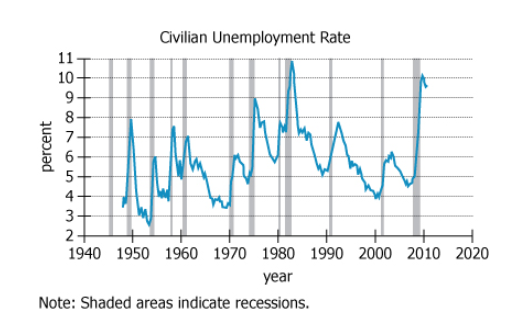Events & Promotions
|
|

GMAT Club Daily Prep
Thank you for using the timer - this advanced tool can estimate your performance and suggest more practice questions. We have subscribed you to Daily Prep Questions via email.
Customized
for You
Track
Your Progress
Practice
Pays
Not interested in getting valuable practice questions and articles delivered to your email? No problem, unsubscribe here.
- Nov 20
07:30 AM PST
-08:30 AM PST
Learn what truly sets the UC Riverside MBA apart and how it helps in your professional growth - Nov 20
01:30 PM EST
-02:30 PM IST
Learn how Kamakshi achieved a GMAT 675 with an impressive 96th %ile in Data Insights. Discover the unique methods and exam strategies that helped her excel in DI along with other sections for a balanced and high score. - Nov 19
12:30 PM EST
-01:30 PM EST
Learn how Keshav, a Chartered Accountant, scored an impressive 705 on GMAT in just 30 days with GMATWhiz's expert guidance. In this video, he shares preparation tips and strategies that worked for him, including the mock, time management, and more - Nov 22
11:00 AM IST
-01:00 PM IST
Do RC/MSR passages scare you? e-GMAT is conducting a masterclass to help you learn – Learn effective reading strategies Tackle difficult RC & MSR with confidence Excel in timed test environment - Nov 23
11:00 AM IST
-01:00 PM IST
Attend this free GMAT Algebra Webinar and learn how to master the most challenging Inequalities and Absolute Value problems with ease. - Nov 24
07:00 PM PST
-08:00 PM PST
Full-length FE mock with insightful analytics, weakness diagnosis, and video explanations! - Nov 25
10:00 AM EST
-11:00 AM EST
Prefer video-based learning? The Target Test Prep OnDemand course is a one-of-a-kind video masterclass featuring 400 hours of lecture-style teaching by Scott Woodbury-Stewart, founder of Target Test Prep and one of the most accomplished GMAT instructors.
Fish181
Joined: 13 Dec 2023
Last visit: 22 Jan 2025
Posts: 135
Given Kudos: 53
Status:Applying in R1 of 2024 to t15
Affiliations: University of Tennessee
Location: United States (CO)
Concentration: Strategy, Finance
GMAT Focus 1: 605 Q76 V84 DI80 

GMAT Focus 2: 615 Q78 V86 DI78 

GPA: 3.62
WE:Analyst (Consumer Packaged Goods)
GMAT Focus 2: 615 Q78 V86 DI78 

Posts: 135
Kudos
Bookmarks
Dropdown 1: End
Dropdown 2: a steep decrease
Be sure to select an answer first to save it in the Error Log before revealing the correct answer (OA)!
Difficulty:
 95%
(hard)
95%
(hard)
Question Stats:
45% (01:56) correct 55%
(01:59)
wrong
55%
(01:59)
wrong  based on 1812
sessions
based on 1812
sessions
History
Date
Time
Result
Not Attempted Yet
Select from each of the drop-down menus the option that creates the most accurate statement.
Based on the information in the graph, peaks in civilian unemployment rates occurred nearest the of a recession.
Based on the information in the graph, the period immediately following the recession ending in the late 1940s, compared with the period immediately following the recession ending in the early 1990s, was characterized by in civilian unemployment rates.
ID: 100316

2222222.PNG [ 76.88 KiB | Viewed 15478 times ]
Attachment:
2222222.PNG [ 76.88 KiB | Viewed 15478 times ]
ShowHide Answer
Official Answer
Dropdown 1: End
Dropdown 2: a steep decrease
Kudos
Bookmarks
Fish181
The graph indicates recessions using the grey bars so first recession started in 1945 and ended in 1946 approx. Second recession started in 1949 and ended in 1950 (just before) etc.
Based on the information in the graph, peaks in civilian unemployment rates occurred nearest the ___ of a recession.
Attachment:
Screenshot 2024-06-20 at 6.13.59 PM.png [ 143.74 KiB | Viewed 11759 times ]
The unemployment rate is highest (peaks) at the end of the recessions (or slightly after that in recent years).
ANSWER:End
Based on the information in the graph, the period immediately following the recession ending in the late 1940s, compared with the period immediately following the recession ending in the early 1990s, was characterized by ____ in civilian unemployment rates.
Attachment:
Screenshot 2024-06-20 at 6.15.34 PM.png [ 133.46 KiB | Viewed 11479 times ]
The period immediately following the recession in late 1940s witnessed a sharp decline in unemploment rate (from 8% to about 3%) as shown by the slope of the blue line after the peak.
In comparison, the period immediately following the recession in early 1990s witnessed an increase in unemploment rate (from 6.5% to about 7.7%) as shown by the upward slope of the blue line to reach the peak.
Hence period following the recession ending in the late 1940s was characterized by a steep decline in civilian unemployment rates.
ANSWER: a steep decrease
General Discussion
Kudos
Bookmarks
Quote:
We’re looking for peaks in the unemployment rates (blue line) in relation to recessions (shaded area). There’s a pattern of a peak always close to the right end of the shaded area, thus, as per the graphic, highest rates are seen nearest the end of a recession.
Quote:
This is tricky. Intuitively one can go initially to the “steep increase” alternative (myself included) since the curves are steepen post-recession late 1940s and 1990s. But, prompt asks for period immediately following the recession ending in the late 1940s, compared with the period immediately following the recession ending in the early 1990 - so we have to compare late 1940s post-recession rate of about 8% with 1990s post-recession rate about 6%, which, in comparison, shows a steep decrease in value.
Posted from my mobile device














